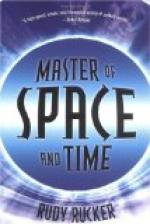We have seen how communication has developed, very slowly at first, and then, as electricity was discovered, with great rapidity until man may converse with man at a distance of five thousand miles. What the future will bring forth we do not know. The ether may be made to accomplish even more wonderful things as a bearer of intelligence. Though we cannot now see how it would be possible, the day may come when every automobile and aeroplane will be equipped with its wireless telephone, and the motorist and aviator, wherever they go, may talk with anyone anywhere. The transmission of power by wireless is confidently predicted. Pictures have been transmitted by telegraph. It may be possible to transmit them by wireless. Then some one may find out how to transmit moving pictures through the ether. Then one might sit and see before him on a screen a representation of what was then happening thousands of miles away, and, listening through a telephone, hear all the sounds at the same place. Wonders that we cannot even now imagine may lie before us.
APPENDIX A
NEW DEVELOPMENTS OF THE TELEGRAPH
By F.W. Lienan, Superintendent Tariff Bureau, Western Union Telegraph Company
The invention of Samuel F.B. Morse is unique in this, that the methods and instruments of telegraph operation as he evolved them from his first experimental apparatus were so simple, and yet so completely met the requirements, that they have continued in use to the present day in practically their original form. But this does not mean that there has not been the same constant striving for betterment in this as in every other art. Many minds have, since the birth of the telegraph, occupied themselves with the problem of devising improved means of telegraphic transmission. The results have varied according to the point of view from which the subject was approached, but all, directly or indirectly, sought the same goal (the obvious one, since speed is the essence of telegraphy), to find the best means of sending more messages over the wire in a given time. It will readily suggest itself that the solution of this problem lies either in an arrangement enabling the wire to carry more than one message at once, or in some apparatus capable of transmitting messages over the wire more rapidly than can be done by hand, or in a combination of both these principles.
Duplex and quadruples operations are perhaps the most generally known methods by which increased utilization of the capacity of the line has been achieved. Duplex operation permits of the sending of two messages over one wire in opposite directions at the same time; and quadruples, the simultaneous transmission of four messages, two going in each direction. Truly a remarkable accomplishment; but, like many other things that have found their permanent place in daily use, become so familiar that we no longer pause to marvel at it. These expedients constitute a direct and very effective attack on the problem how to get more work out of the wire with the existing means of operation, and on account of their fundamental character and the important place which by reason thereof they have taken in the telegraphic art, are entitled to first mention.




